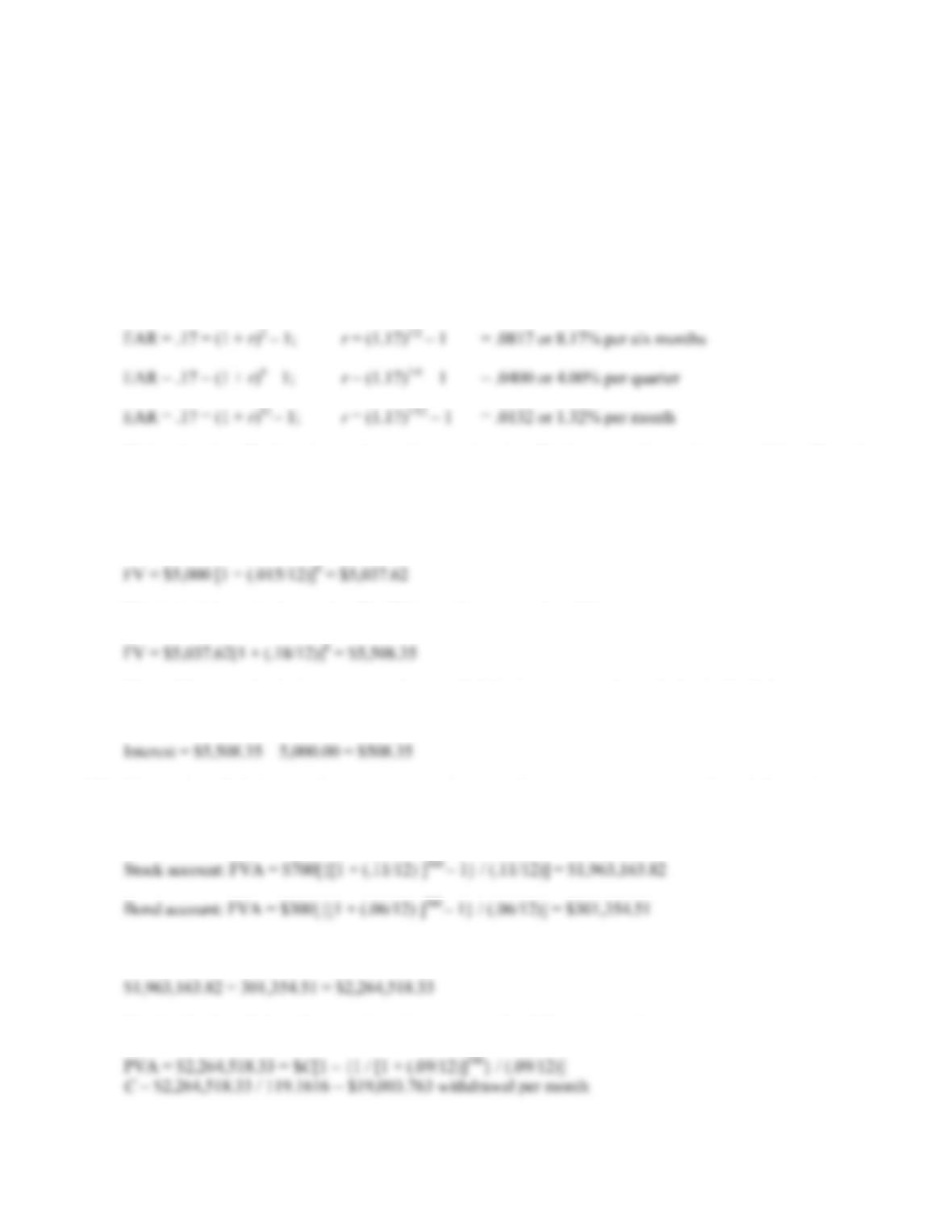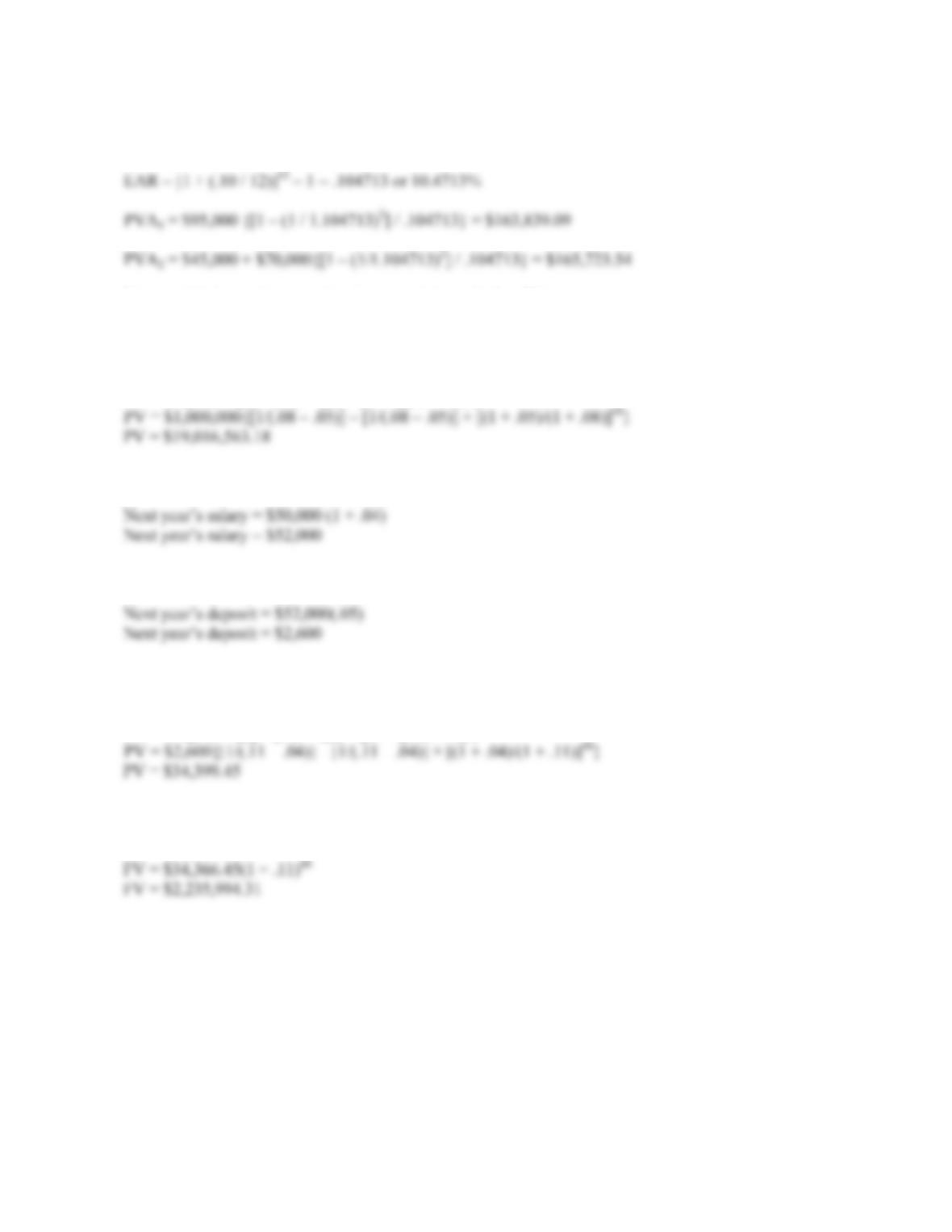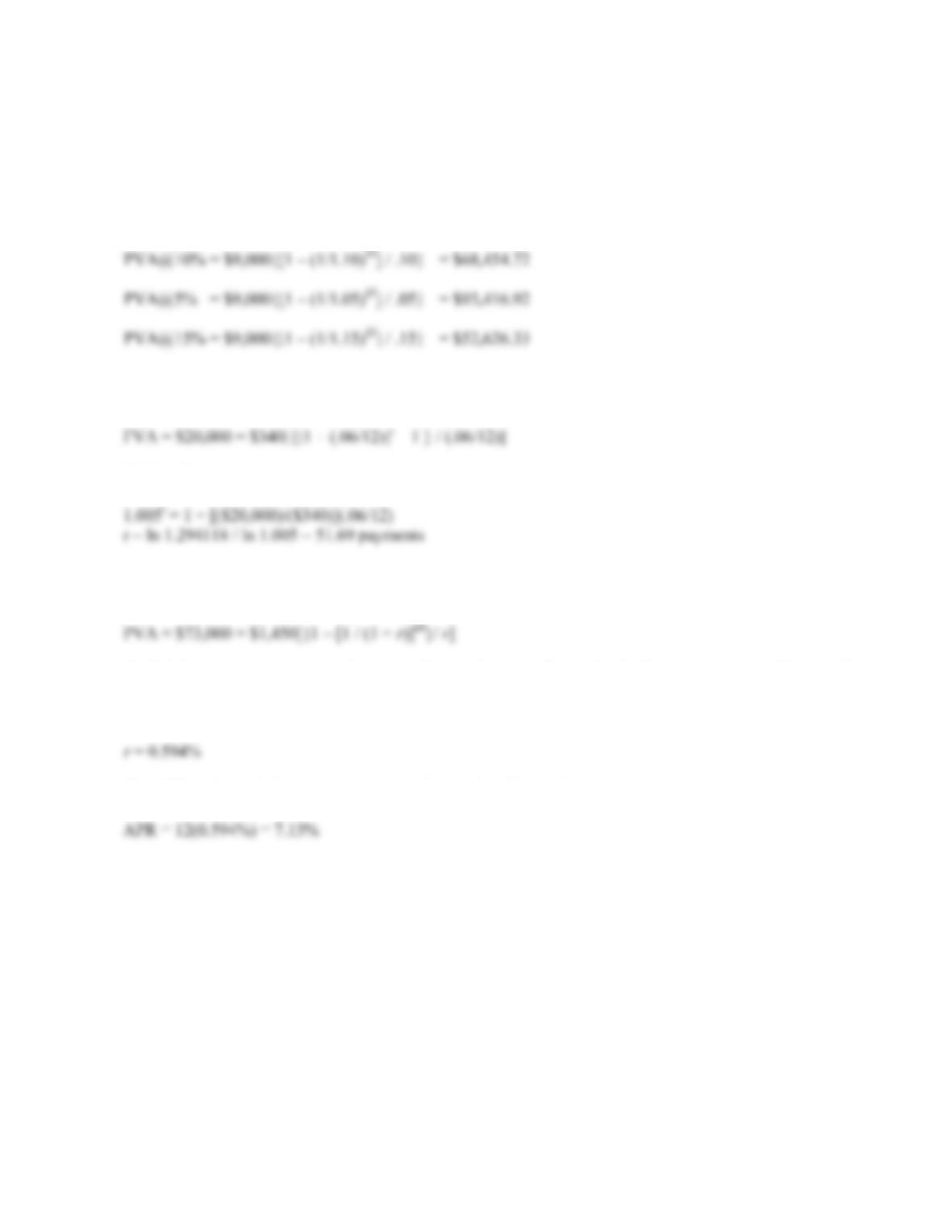B-78 SOLUTIONS
33. We need to find the FV of a lump sum in one year and two years. It is important that we use the
number of months in compounding since interest is compounded monthly in this case. So:
There is also another common alternative solution. We could find the EAR, and use the number of years as
our compounding periods. So we will find the EAR first:
Using the EAR and the number of years to find the FV, we get:
Either method is correct and acceptable. We have simply made sure that the interest compounding period is
the same as the number of periods we use to calculate the FV.
34. Here we are finding the annuity payment necessary to achieve the same FV. The interest rate given is a 12
percent APR, with monthly deposits. We must make sure to use the number of months in the equation. So,
using the FVA equation:
Starting today:
FVA = C[{[1 + (.12/12) ]480 – 1} / (.12/12)]
Starting in 10 years:
FVA = C[{[1 + (.12/12) ]360 – 1} / (.12/12)]
Starting in 20 years:
FVA = C[{[1 + (.12/12) ]240 – 1} / (.12/12)]
Notice that a deposit for half the length of time, i.e. 20 years versus 40 years, does not mean that the
annuity payment is doubled. In this example, by reducing the savings period by one-half, the deposit
necessary to achieve the same ending value is about twelve times as large.
35. Since we are looking to quadruple our money, the PV and FV are irrelevant as long as the FV is three times
as large as the PV. The number of periods is four, the number of quarters per year. So:







